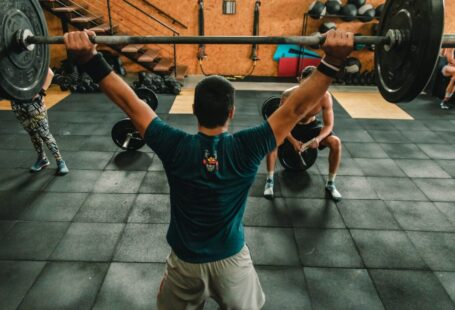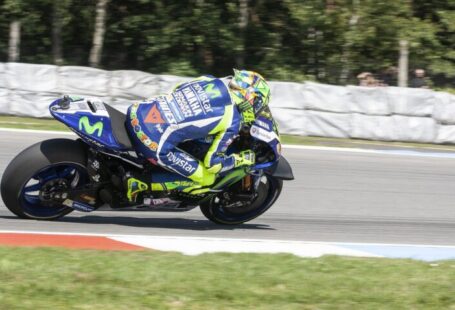|
Motovation Frame Sliders by Chris B. for webBikeWorld.com wBW Reviews Home | Those of us who have experienced the misfortune of seeing our own bike in its “natural” position, on its side, know what a gut wrenching site this is. On occasion it’s a toss-up as to which is injured more, our pride or the bike. And of course, this is most apt to happen when there’s a crowd present to witness the event. Someone once told me that “the stability of a motorcycle is indirectly proportional to the size of the audience”. I’m not proud to admit the fact that over the last 132, 000 miles with my ’99 BMW K1200LT (a near 900 lb. top heavy beast) I’ve seen it in this position more than once. Luckily for me (and many other LT riders) BMW had the foresight to build in “tip-over” wings on the sides of the bike. If it’s dropped at a very slow speed or a stop, usually all that’s injured is the plastic cover over the tip-over bar. Other manufactures have incorporated similar devices in the bike’s original design (as with Honda’s GL-1800 Gold Wing and their ST-1300), but the majority have nothing in place to help minimize damage to the bike should this unfortunate event occur. Maybe it’s their way of ensuring continued business in replacement parts. Sportbikes, or any bike with a fairing, are highly prone to this kind of damage purely by design. On these bikes even a tip-over can have costly consequences. A friend lost control of his new BMW K1200RS when removing it from the side stand and after a short struggle slowly dropped it onto its right side. The resulting damage was over $1, 000.00, not to mention the 3 weeks it was in the shop! I have not dropped my ’06 Yamaha FJR1300A and hopefully never will, but then do we ever “plan” on it happening? I can’t tell you how many times I’ve heard “It was just sitting there when somehow it rolled off the side stand and fell over” or something very similar. A stationary drop is one thing, but what if it happens at a speed that’s anything more than a crawl? The potential for serious damage is real. A visit to any of the motorcycle insurance auction sights will bear witness to the extent of damage that can result from a “low side” fall. Obviously, preventing it from happening in the first place is the best plan, but in the real world of ever changing surface and road hazards the possibility is ever present for the pavement and your bike to get up close and personal. Maybe in the future, via our divine government’s intervention to protect us from ourselves, motorcycles will have some sort of gyroscopic system on them that will make it impossible for them to fall over or a set of small wheels that will pop out from the sides just before the bodywork makes contact. Don’t laugh! Honda has already installed airbags on their Gold Wing! But what if there was something simple you could add to your bike that could minimize the damage that can occur from such an incident? Frame sliders, which are basically a type of knob device that protrudes out from the side of the bike, are designed to perform this task. Since they stick out farther than the body work, their intention is to hold the bike up off the road surface enough to prevent the fairing from making contact with the road, or at least that’s the idea. Seems simple enough, eh? What I didn’t know is that there’s a bit more to them than I realized. What if, along with keeping the fairing off the roadway, the slider could help slow the bike’s slide thus reducing the distance traveled which should also reduce damage suffered by the bike? Note boss machined to fit recess on FJR frame. Torque ’em to specs. The missing washer sent by Motovation. The finished product. The material used in the slider would then have to be hard enough to withstand the forces applied during the event, soft enough to absorb some of the energy, yet not totally disintegrate. How it’s mounted to the frame will also determine how, and how much, stress is transferred to the frame. It would only need to last through one event (kind of like the mesh type jackets some of us wear when it gets hot) after which it can be replaced. I learned about this while searching for frame slides for my FJR at Motovation Accessories. Motovation Accessories has what I thought was an excellent overview on slider design and placement. It’s worth taking the time to read. I’m no engineer, but as an Automotive Technician for 37 years, it sure made sense to me. Motovation Accessories came to be as a result of a couple of guys trying to get frame sliders for their sportbikes. Unhappy with what they found available, they tried designing and making their own. It started with just frame sliders and after their buddies saw how well their’s performed, they wanted some too. They discovered there was a niche for well designed sportbike accessories at an affordable price and moved forward to supply it. Frame sliders are their basis, but Motovation Accessories also has rear axle, front fork and bar-end sliders available in addition to other sport-bike performance products. Be sure to check out their website for a complete listing. Motovation Accessories uses a “proprietary High Molecular Density (HMD) formulation of nylon” in their sliders. “This nylon is impregnated during the extrusion process with UV inhibitors to resist destabilization of the molecular matrix and discoloration during prolonged UV exposure”. The bottom line here is since you don’t know when, if ever, you’re going to need these sliders they could be exposed to a lot of UV rays before they are “pressed” into service. In the meantime, if not resistant to UV rays, their performance could seriously deteriorate, possibly causing them to shatter on impact. Their sliders are also fitted with machined aluminum inserts at the mounting points for increased strength. As far as where the sliders are mounted and how difficult it is to install depends on the model bike and the style slider chosen. Some can be mounted in mere moments, as on my FJR, while others may actually require drilling holes in the fairings along with other modifications. Motovation Accessories does have frame slider kits available for some bikes they refer to as “No Cut” sliders which do not require any cutting or drilling. These are usually attached to a frame member via CNC milled and anodized brackets. I noticed that some of the frame slider kits were referred to as “Race Sliders. These, as explained to me by Roland at Motovation Accessories, are bolted directly into the frame providing the strongest possible solution, usually require fairing modifications and are best suited for race or track-day use. If you’re looking for the strongest arrangement and don’t mind modifying your bike then these might be the ticket, even if you’re not headed to the track. |



